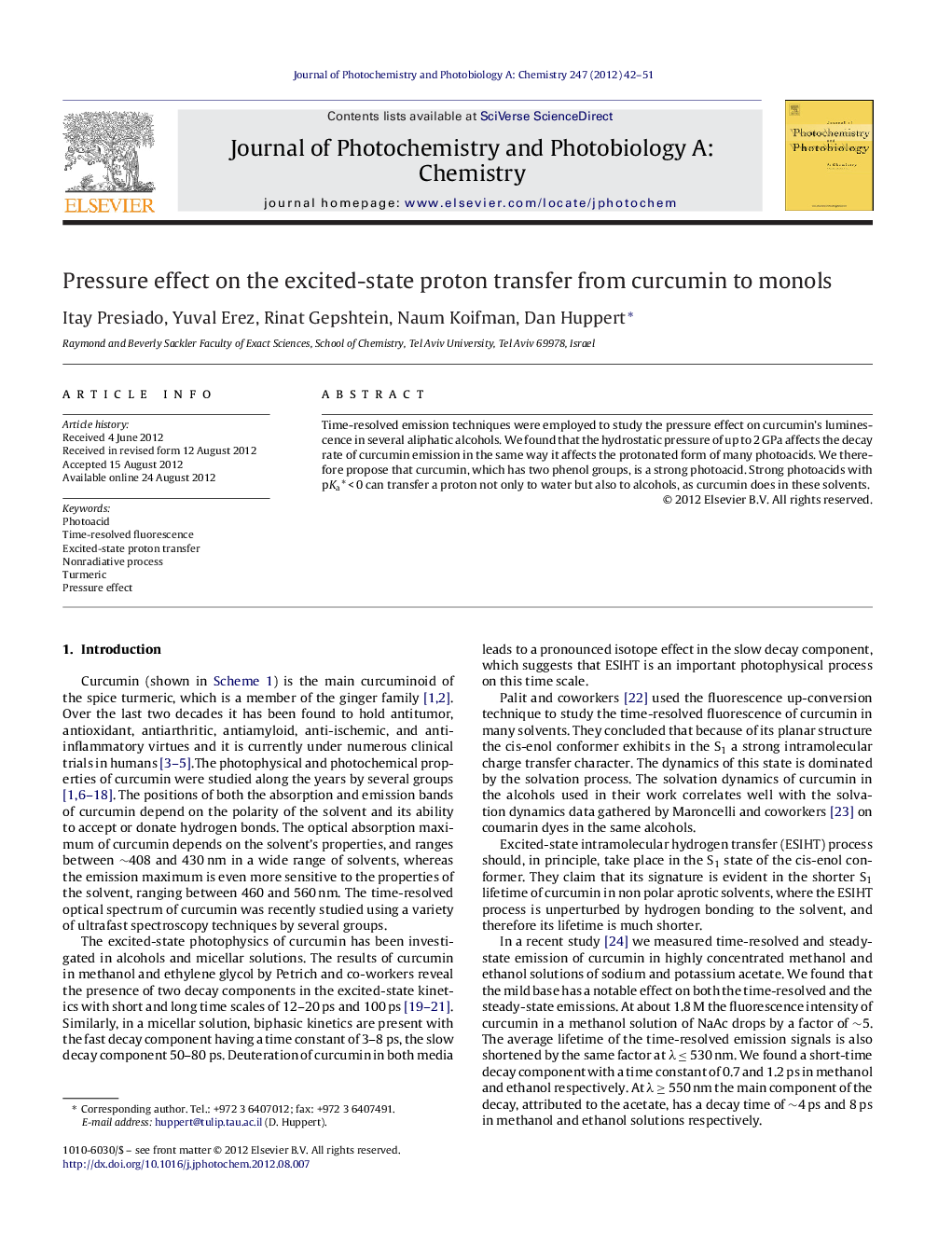| Article ID | Journal | Published Year | Pages | File Type |
|---|---|---|---|---|
| 26802 | Journal of Photochemistry and Photobiology A: Chemistry | 2012 | 10 Pages |
Time-resolved emission techniques were employed to study the pressure effect on curcumin's luminescence in several aliphatic alcohols. We found that the hydrostatic pressure of up to 2 GPa affects the decay rate of curcumin emission in the same way it affects the protonated form of many photoacids. We therefore propose that curcumin, which has two phenol groups, is a strong photoacid. Strong photoacids with pKa* < 0 can transfer a proton not only to water but also to alcohols, as curcumin does in these solvents.
Graphical abstractFigure optionsDownload full-size imageDownload as PowerPoint slideHighlights► Pressure dependence in monols suggests that curcumin is a photoacid. ► Pressure effect on excited-state proton transfer of curcumin indicates that both solvent dynamics and proton tunneling take place. ► The excited-state proton transfer rate for curcumin in methanol and ethanol increases as the pressure increases. ► The excited-state proton transfer rate for curcumin in 1-propanol increases at low pressure, but decreases at high pressure. ► In 1-butanol and 1-pentanol the excited state proton transfer rate for curcumin is too slow for detection.
